A friend and I recently had an intense conversation about fruit. “Underripe pears are tragic,” she said. “So much wasted potential.”
“How do you fall on apricots?” I asked.
“I do enjoy apricots, however, the pit seems disproportionately large, so there’s not as much payoff there. And a lot of the flesh gets impacted by the pit.”
“Ok, fair. But a wonderful ripe apricot is a top-five fruit for me.”
“I respect that.”
Perhaps people who have conversations like this are the people who enjoy schnapps. I’m not going to pretend that schnapps/eau de vie is for everyone, or even for normal people.
But ask yourself this: Do I like fruit? Do I hold strong opinions on fruit? At its best, schnapps is a snapshot in time of the ripest, most aromatic, most beautiful essence of fruit. Yet—and this is likely the confounding part—in schnapps that fruit is completely unadorned by sugar. It’s an experiment in fruit that’s dry and not sweet. Is this an esoteric experience? Yes, it can be. But there is nothing in the world like that moment, after a wonderful dinner, after the dessert, after the coffee, when someone cracks open a magical eau de vie.
I’ve come to see schnapps lovers as people who go through life feeling perpetually misunderstood. Which is why it’s always very special to run into a fellow traveler on the schnapps trail. Therefore, I encourage fellow schnapps lovers to out themselves and share their love letters in the safe space of our comments.
Ever since I started writing about spirits I’ve been trying to make clear fruit brandies happen. At some point, I assume some readers are like: “Gretchen, stop tryting to make [schnapps] happen. It’s not going to happen.” But every year, I make my little attempt.
My Guide to Fruit Brandies
Today, I’m offering a multi-media pitch. If you click on the audio link at the top, you can listen to an epic 25-minute podcast tasting of schnapps recorded on a Sunday afternoon not too long ago.
Meanwhile, below is my eau de vie buyers guide. I’ve included fruit brandies at all price points, from under $40 to well over $300. I think maybe too much emphasis is placed on the bottles at the top end, and so I’ve tried to suggest some starter brandies for skeptical newbies. But remember, you’re not going to be guzzling these. A good bottle of schnapps can last a long time and is worth the investment.
For those who have the coin and want to experience a range of schnapps from a top producer, I’ve found a limited supply of Rochelt’s sampler pack, with four mini bottles (apple, apricot, cherry, and quince) that you can order for $375.
I have grouped all brandies by fruit type. Unless noted, all prices below are for 375 ml bottles (ie. half bottles). Click on links to buy online.
Pear (aka Poire Williams)
Pear brandies are probably the fruit brandy that’s easiest to find at your local store. There are a number of good-value domestic versions available.
Laurent Cazottes Goutte de Poire Williams, $90
A gold standard of pear spirits. It takes a team of 10 people one month to clean the fruits after harvest and prepare for fermenting and distilling. Lively, pretty, full of the essence of ripe, juicy pear. This is the opposite of a whatever a “tragic pear” might be.
Clear Creek Pear (Oregon), $27
Amazing value for such a beautiful spirit. One of the great brandy values in the world, at a price low enough so that you might even experiment in cocktails.
Purkhart Pear Williams Eau-de-Vie (Austria), $27
A lovely Alpine standard, made from pears grown in Alto Adige. Another one that’s not too expensive to use as a replacement for gin in a pear-y martini.
Finger Lakes Distilling Pear Brandy (New York), $33
Lovely aromatics and flavor from this craft producer of apple spirits.
Öömrang Bartlett Pear Brandy (Washington), $45
A new domestic entry in the pear brandy category, by a promising producer based in Washington state.
Cherry (aka Kirschwasser)
My favorite schnapps is probably what German speakers call kirsch or kirschwasser. The best comes from Germany, Austria and Switzerland, where they dry, floral, and with a hint of cherry pit, which brings complexity. As with pear, I also find more cherry eaux de vie at affordable price points. You can see my favorite kirsch cocktail below.
Schladerer Kirschwasser (Germany), $46 for 750 ml
One of my everyday favorites. Over 160 years ago, Sixtus Schladerer began making fruit brandies for guests at his restaurant. Little has changed. For me, it’s one of the top-value spirits in the world.
Etter Zug Kirsch (Switzerland), $40
Another excellent and affordable kirsch, from the Swiss Alps, now available again in the US through Haus Alpenz. It’s made exclusively from cherries grown in the region of Zug, a cherry appellation that dates back 600 years.
Clear Creek Cherry Brandy (Oregon), $27
As with their pear and plum, Clear Creek is always a pick among domestic fruit brandies. This is also definitely a go-to for cocktails that call for kirsch.
Rochelt Weichsel (Austria), $318
This is one of two cherry brandies made by iconic producer Rochelt, this one from morello cherries is my favorite. It’s pricey af, but it’s also the finest cherry brandy in the world.
Plum (aka Slivovitz)
The most famous plum brandy is slivovitz, made all over Eastern Europe. A lot of that is homemade moonshine-quality—I still get night sweats thinking about a backyard Serbian rendition I was once given. But the best plum brandy is exquisite.
Laurent Cazottes Goutte de Reine-Claude Dorée, $90
It’s hard to overstate how good this plum brandy is, made from greengage plums grown in southwest France. Powerful, bright, intense, inspiring.
Capreolus Damson Plum (UK), $200
It’s a tradition in the UK, to pick damson plums from country hedgerows and make homemade spirits with them. Here, distiller Barney Wilczak uses more than 50 pounds of damon plums for one liter of eau de vie, and achieves something incredibly profound.
Clear Creek (Oregon), $30
Softer and supple for a plum brandy, made from Italian blue plums, a lovely delicate spirit.
Rootstock (New York), $21
Beautiful spirit, rich plum flavor, finishing dry with great structure, incredible value. This is an amazing value for a solid, everyday eau de vie.
Apricot
Delicate and floral, apricot schnapps has long been an Alpine favorite, particularly in Austria. The price range between Purkhart’s Blume Marillen ($35) and Rochelt’s Wachau Apricot ($400)
Purkhart ‘Blume Marillen’ Apricot Eau die Vie (Austria), $35
Excellent value for a spirit made from over four pounds of apricots distilled for ea 375 ml bottle.
Öömrang Apricot Brandy (Washington), $45
It’s rare to find a domestic apricot brandy, and this bottling from a newish Washington State producer is surprisingly good.
Rochelt Wachau Apricot (Austria) $400
It’s hard to explain just how ethereal, complex, and beautiful this spirit is. Made from special apricots grown in Austria’s Wachau wine region.
Wildcards
Proving the idea that you can make eau de vie from pretty much anything.
Hans Reisetbauer Carrot Eau de Vie (Austria), $75
You never thought a vegetable schnapps could taste this good, but the sweetness and earthy complexity earthy complexity of the carrot is incredible. One of my favorite spirits in the world.
Hans Reisetbauer Rowanberry (Austria), $111
Made from wild rowanberries grown in Austria at over 2,000 feet elevation. Memorable and transcendent.
Capreolus Quince Eau-de-Vie (UK), $210
Quince is a strange fruit. This spirit—made from over 50 pounds of quince per liter—is perfumed and complex, with layers and layers at turns powerful and delicate.
Clear Creek Douglas Fir (Oregon), $50
Christmas in a glass. Made with the young buds of Douglas fir trees from the Pacific Northwest. If you want a walk on the wild side, try this.
Rochelt Black Elderberry (Austria), $416
This is not at all like the elderflower liqueur that was so popular a decade ago. So complex—it’s fruity, savory, earthy all at once. It’s “foreign” in all the best ways.
A Farewell to Hemingway: The Kirsch Cocktail
Ernest Hemingway wasn't all about rum. He especially loved kirschwasser when he was skiing in the Alps. Kirsch is rarely the primary spirit in a cocktail, but this noteworthy exception—essentially a “kirsch Collins”—was created by Hemingway in 1937 and published in his friend Charles Baker's The Gentlemen's Companion. The original recipe calls for cherry syrup, but I like to use raspberry syrup. Note the odd ratio and measure carefully for best results: 2 ¼ ounces of kirsch to 1 ounce of lime juice. From To Have and Have Another: A Hemingway Cocktail Companion, by Philip Greene.
2 ¼ ounces kirsch
1 ounces freshly squeezed lime juice
¼ ounce raspberry or cherry syrup
Twist of lime peel, cut into a long spiral, for garnish
2 ounces chilled club soda
Fill a cocktail shaker with ice. Add the kirsch, lime juice, and raspberry syrup. Shake well, then strain into a highball or collins glass filled with ice cubes and the spiral lime peel. Top with club soda.




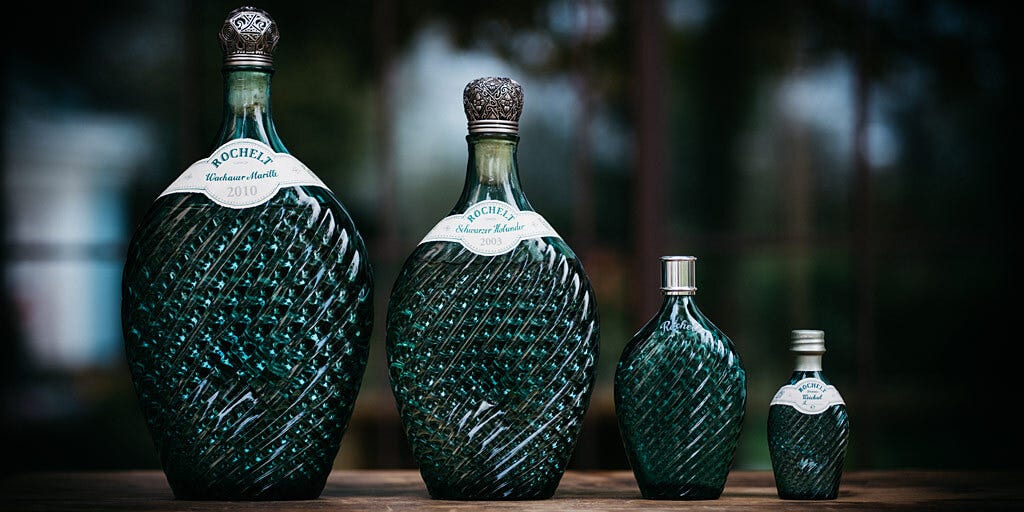
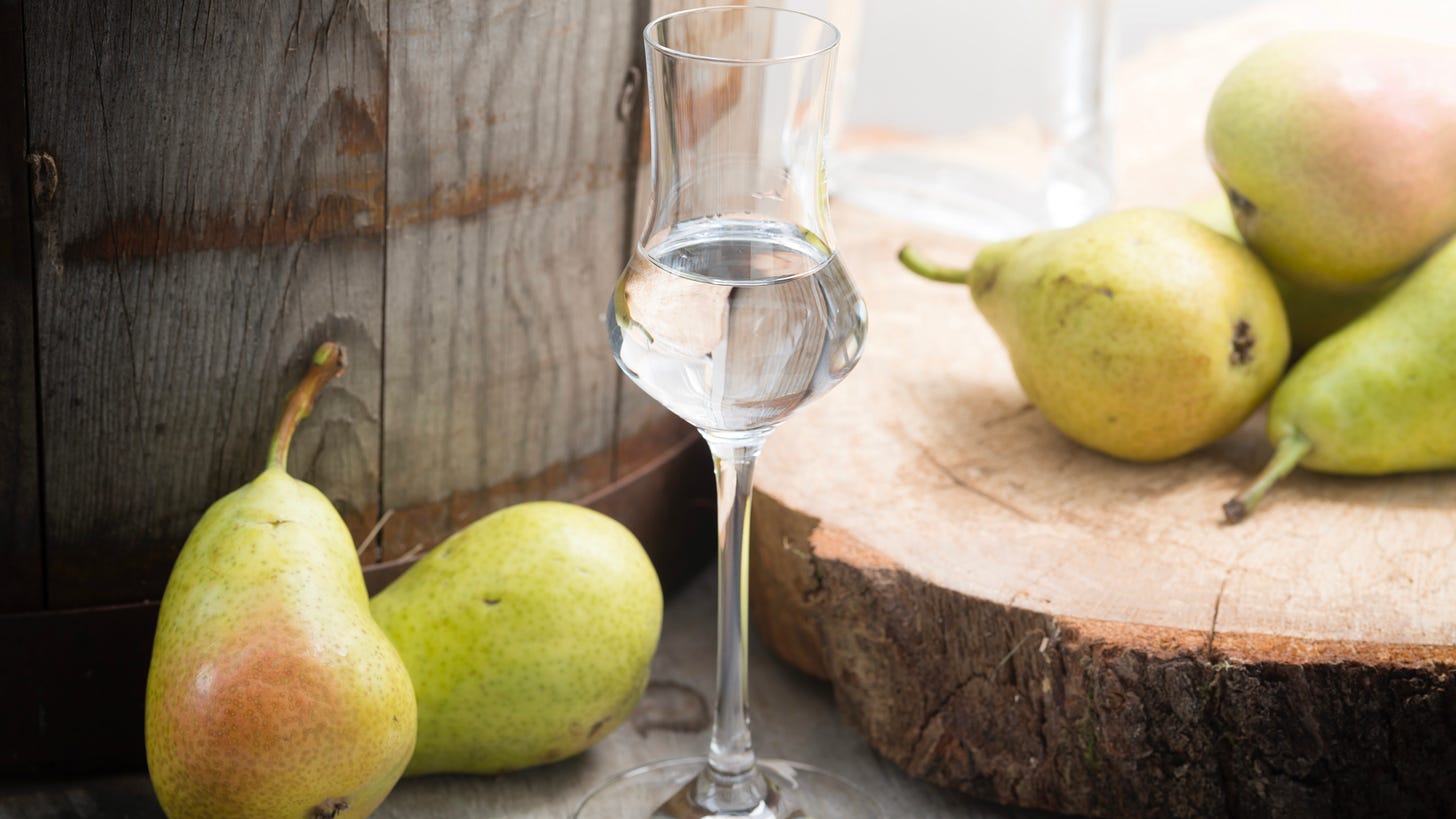
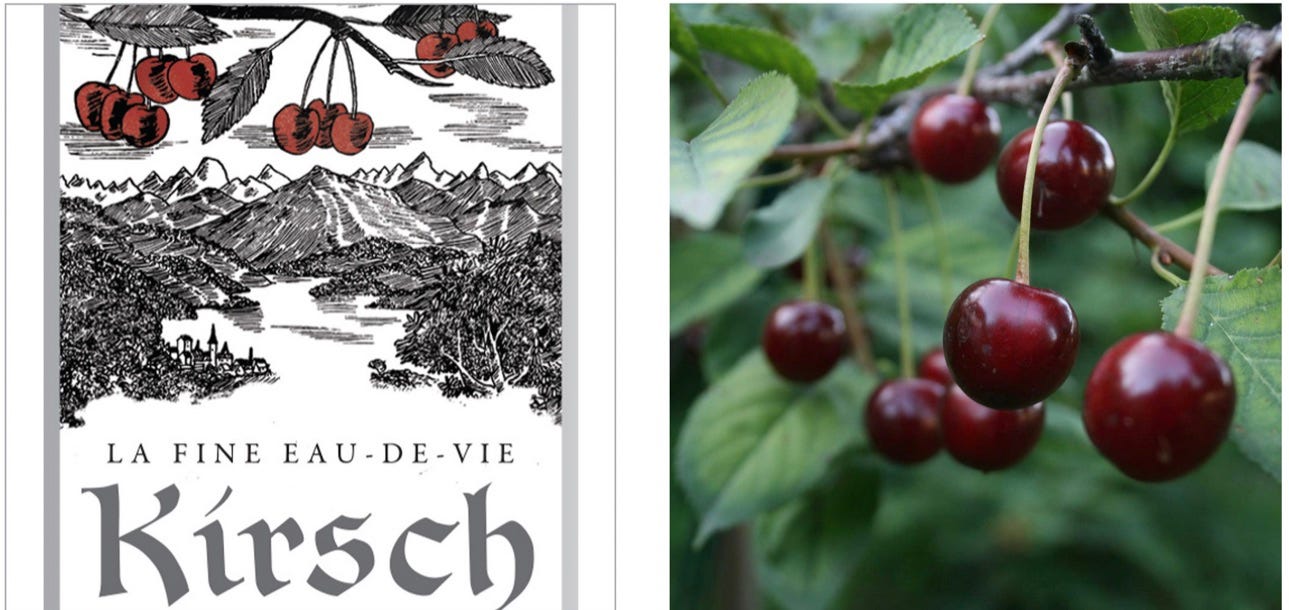


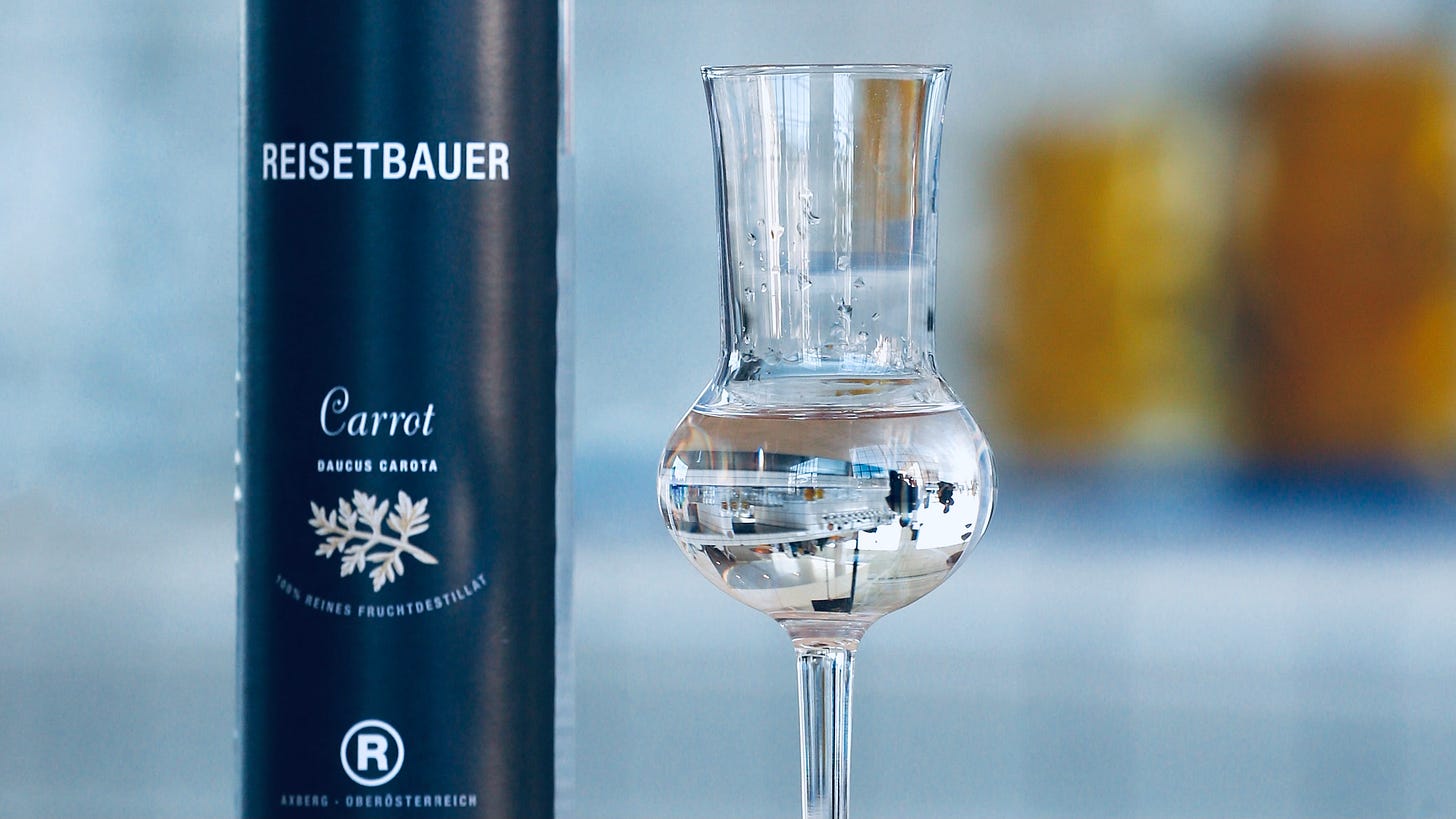



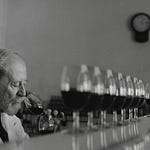
Making The Case For Schnapps (Once Again)